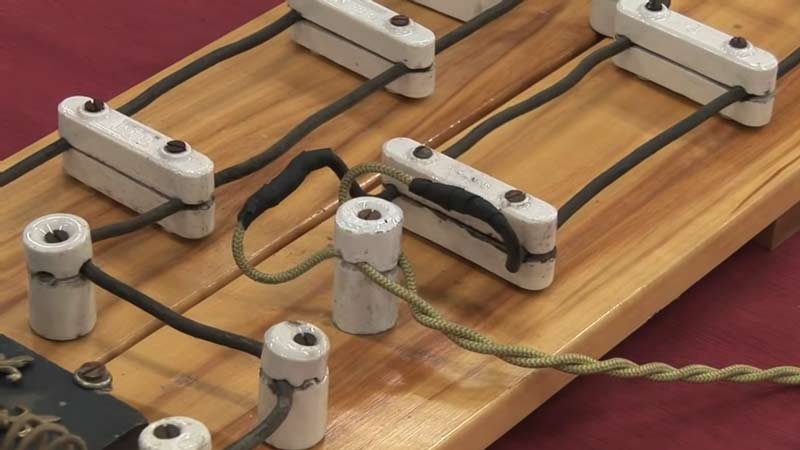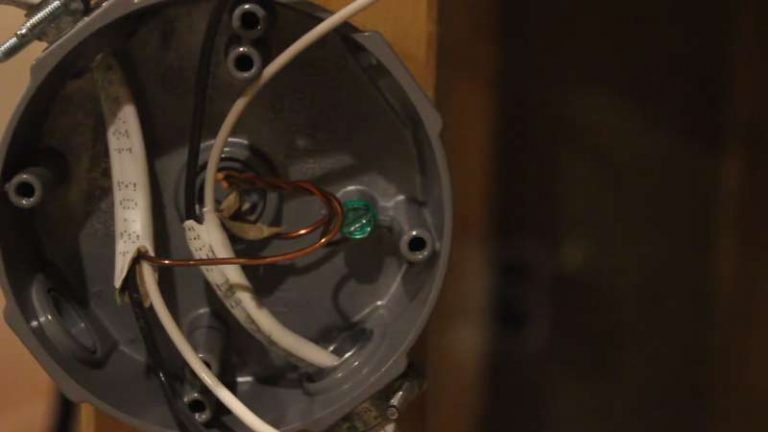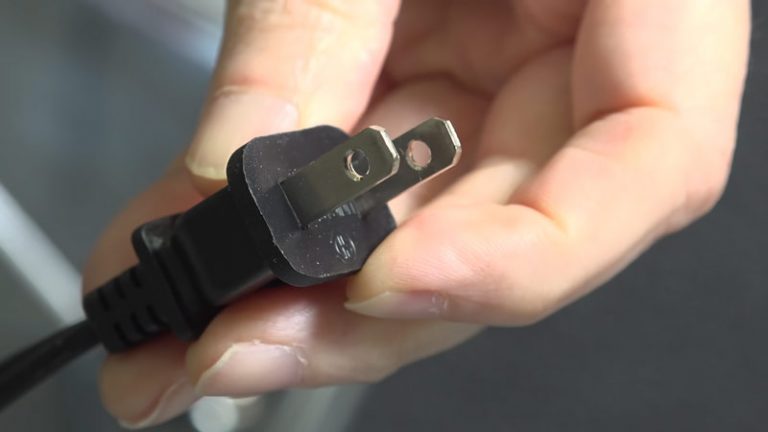Why Is Knob And Tube Wiring No Longer Functional

A knobs-and-tube wiring system is less expensive to install than power cables and it’s easier to work with because the wires are thicker. The older style of tubing was smaller in diameter, which made them less durable but easier to work with; these days they’re typically made from much thicker wire.
Knob and tube wiring systems have been replaced by power cables in most homes due to their high cost of installation
Why Is Knob And Tube Wiring No Longer Functional?
Knobs-and-tube wiring was eventually displaced from interior wiring systems because of the high cost of installation compared with the use of power cables, which combined both power conductors of a circuit in one run (and which later included grounding conductors).
Older style knobs-and-tube wiring had smaller diameter wires within the tubing, making them less durable but easier to work with; these days they are typically made from much thicker wire. A knobs and tube system uses either single or multiple wires to carry signals between devices on a circuit board, rather than using plugs that mate with receptacles like those used for plug-in cords.
The older style had smaller diameter wires within the tubing, making them less durable but easier to work with; these days they are typically made from much thicker wire. Today’s modern knob and tube wiring is more reliable and easier to use due to its superior design.
High Installation Cost
Knob and tube wiring was eventually displaced from interior wiring systems because of the high cost of installation compared with the use of power cables, which combined both power conductors of a circuit in one run (and which later included grounding conductors).
This type of wiring is now more commonly found outside the home, where it’s less expensive to install using power cables. Because knob and tube wiring lacks grounding wires, it can be unsafe if not properly installed or used.
If you’re having trouble with an older light switch or outlet that uses this type of wire, consult a qualified electrician for help restoring functionality.
Usage single or multiple wires
A knobs-and-tube system uses either single or multiple wires to carry signals between devices on a circuit board, rather than using plugs that mate with receptacles like those used for plug-in cards.
The wiring on a knobs-and-tube system is often more compact, making it easier to work with and tangle-free when installed in tight spaces. This type of wiring also uses fewer wires which decreases the chances for interference between devices, as well as shorter runs that reduce the potential for electrical noise buildup over time.
Lastly, because there are no cords plugged into outlets like those found on traditional plug-in systems, you can easily move your furniture around without worrying about disrupting any power connections – something that isn’t always possible with plug-based setups.
Although they’re not currently used very much in modern homes, many people advocate for using knob and tube wiring systems instead of traditional plugs whenever possible.”
Smaller diameter wires
The older style had smaller diameter wires within the tubing, making them less durable but easier to work with; these days they are typically made from much thicker wire.
Knob and tube wiring used to be simpler in design, with smaller diameter wires within the tubing. This made them easier to work with, but over time they have become much thicker which makes them less durable.
In recent years, manufacturers have switched to wire that is typically much thicker making it more difficult to repair or replace if something goes wrong. Old-style knob and tube wiring are generally no longer functional due to their age; you may need a licensed electrician to replace it as part of a home renovation project.
If you’re looking for an easy way to upgrade your home’s electrical system, consider replacing knob and tube wiring with newer styles
Why did they stop using knob and tube wiring?
Knob and tube wiring was once the standard way to connect electrical devices in buildings. It was easy to install, cheap and reliable. But over time, it has been replaced by more advanced methods like cable sleeves and conduit.
There are several reasons why knob and tube wiring is no longer the norm. First of all, it’s difficult to replace if something goes wrong. Secondly, it can be unsafe if there’s a power surge or fire. And finally, modern technology allows for better connections between devices without having to use wires.
Overheating is a common issue with knob and tube wiring, which can be caused by a number of factors including mechanical abuse and breakdown in insulation. When these wires reach the point where they are no longer able to handle the heat that’s being put off by an appliance or device, it can lead to overheating.
This problem may cause devices to malfunction or even catch on fire. Another common issue with knob and tube wiring is Mechanical Abuse. If you’re constantly pulling your wires through tight spaces or bending them too much, this type of damage will happen over time and eventually result in broken connections and overheating problems.
Finally, lack of insulation can also lead to overheating issues as well as other types of electrical failures due to excessive current flow between wire pairs. In addition to inadequate insulation, breakage in wire bundles often occurs when cords become caught between furniture or appliances – causing them to snap like twigs. This kind of damage increases the chances of electrical failure in general because it disrupts the orderly conductivity within each conductor.
And finally, if you’re using old-fashioned wiring without any form of protection (like coatings), then exposure to moisture and extreme temperatures will cause cables inside walls & ceilings, etc., to corrode from the inside out leading to dangerous short circuits
When did they stop using knob and tube wiring?
Knob and tube wiring was a type of electrical wiring that used threaded metal pipes to carry the electric current. This system was popular in the early days of electricity, but it has been largely replaced by other methods since then.
It was used in North America from about 1880 to the 1940s
Knob and tube wiring was an early standardized method of electrical wiring in buildings. This type of wiring is considered obsolete and can be a safety hazard. The wires were often exposed, making them vulnerable to fire. It was also used in North America from about 1880 to the 1940s but has since been replaced by more modern methods such as cable taping and Junction boxes.
Some of the fear associated with it is undeserved
There are some myths surrounding knob and tube wiring that are not warranted. For example, one myth is that this type of wiring is dangerous because it’s susceptible to fires caused by faulty cables or appliances plugged into it. However, this does not have much evidence to support it being a major cause for fires.
It was used in North America from about 1880 to the 1940s
While there may be some outdated aspects of knob and tube wiring, its use across continents shows that this system had some merit behind it at one point or another – even if those merits don’t currently stand up well under scrutiny.
What is the disadvantage of knobs and tube wiring method?
One disadvantage of the knob and tube wiring method is that it’s difficult to keep track of which wires go where. If there are any problems with the wiring, it can be very difficult to fix them without taking apart the entire car.
- The disadvantage of knobs and tube wiring is that it is not as safe as other methods. This type of wiring can be unsafe if you make modifications to it without proper knowledge or experience. Additionally, insulation in this type of wiring can become a fire hazard if it’s not properly installed or maintained.
- Knob and tube wiring also lacks the grounding conductor needed for safety purposes. If this wire isn’t properly grounded, there is a higher risk of electrical shocks and failures in your system.
- Tube wiring may also lack clarity when compared to other types of wires because they are made up of smaller strands which can be difficult to see with the naked eye.
- This makes it more challenging to install correctly, potentially leading to problems down the road like poor performance and fires caused by faulty equipment.
Should I replace knob and tube wiring?
If you’re noticing strange noises or problems with your car’s electrical system, it might be time to replace the knob and tube wiring. This aging infrastructure is usually made of metal wires that can corrode over time, causing problems with your car’s electrical systems.
Wiring Can Become brittle over time
Wiring can become brittle over time, which can lead to its breaking. This type of wiring is often used in older vehicles and may not be as strong as newer wiring. If this happens, the wires could potentially short out or cause other problems with your car. Replacing the knob and tube wiring on your vehicle may be a cost-effective solution to these issues.
It May Be Hazardous If Broken
If you break a knob and tube wire while working on your car, it could be hazardous if electrical current flows through the broken wire. This could result in serious injuries or even death if proper precautions aren’t taken when handling damaged wires。
Replacing Knob and Tube Wiring Can Be Cost-Effective
Replacing knob and tube wiring is usually an expensive task, but depending on the severity of the issue, it may be worth doing in order to prevent further problems with your vehicle’s engine performance or emissions levels.
Depending On The Issue, Repairing Could Result In Savings Over Time
Depending on the issue that you are experiencing with your car’s engine or emissions levels, repairing might end up being more costly down the road than simply replacing knob and tube wiring。
Always Take Precautions When Working With Damaged Wires
Damaged wires are dangerous, so always take precautions when working with them. Before attempting to fix damaged wires, disconnect your car’s battery and turn off the ignition. Always wear protective gear such as gloves, safety glasses, and ear protection. When working with wires, be sure to follow all manufacturer’s safety instructions.
To Recap
There are a few causes of Knob And Tube wiring no longer being functional. One common issue is that the wire insulation can become worn or damaged, which leads to electrical shorts and eventually loss of function.
Older homes may also have Knob And Tube wiring that was never upgraded, so it may be time for a rebuild. Finally, if there’s any water damage to the wires, they will also lose their functionality.







